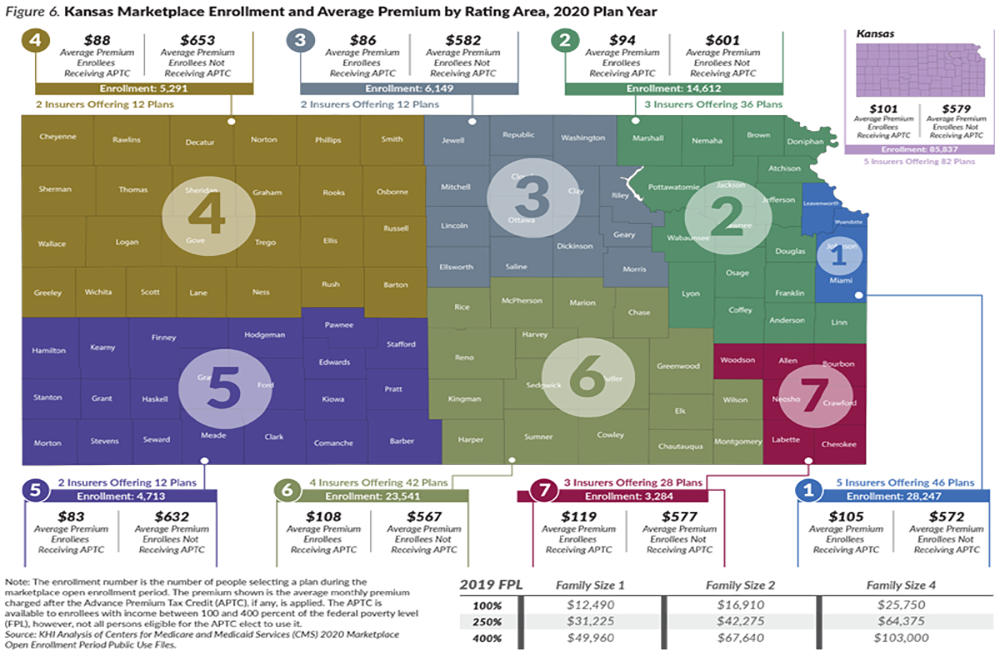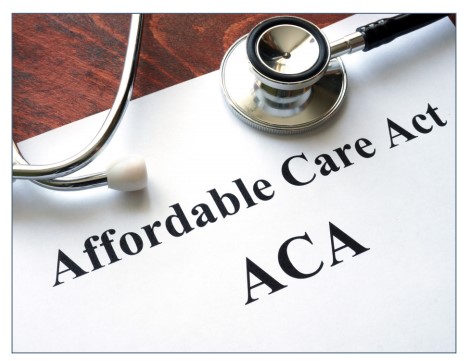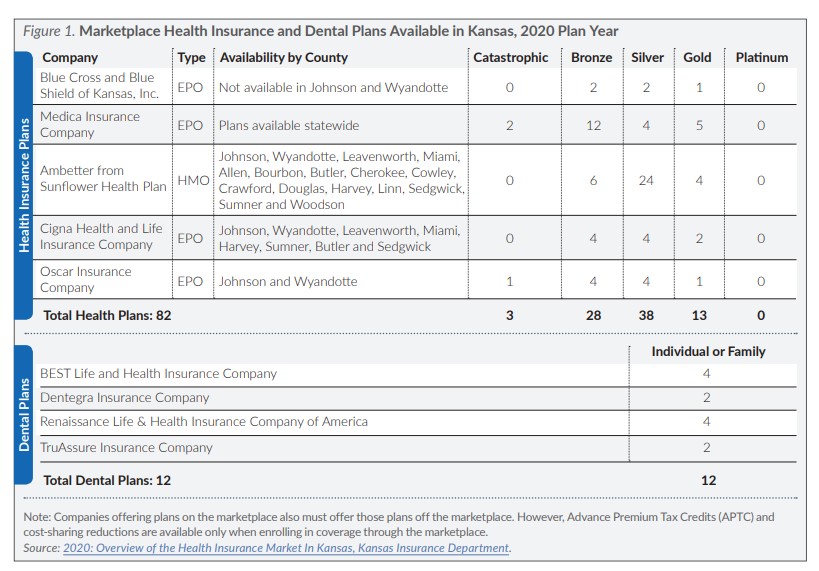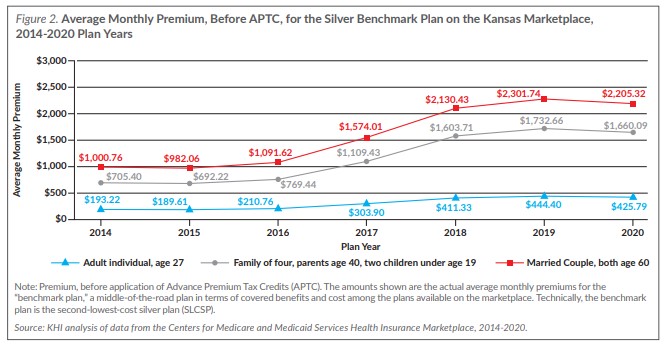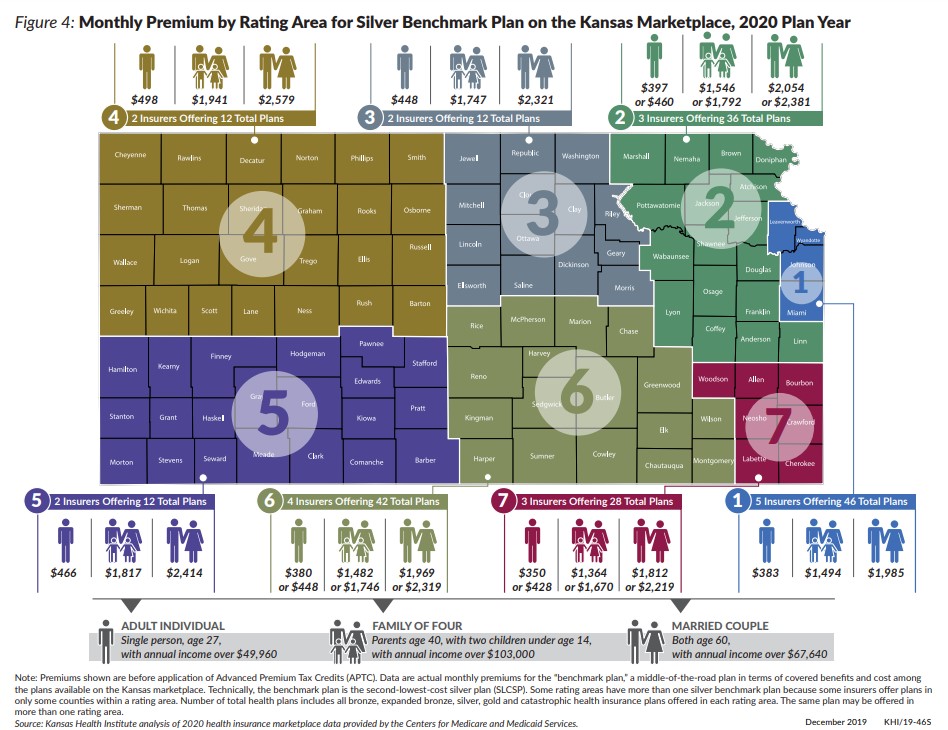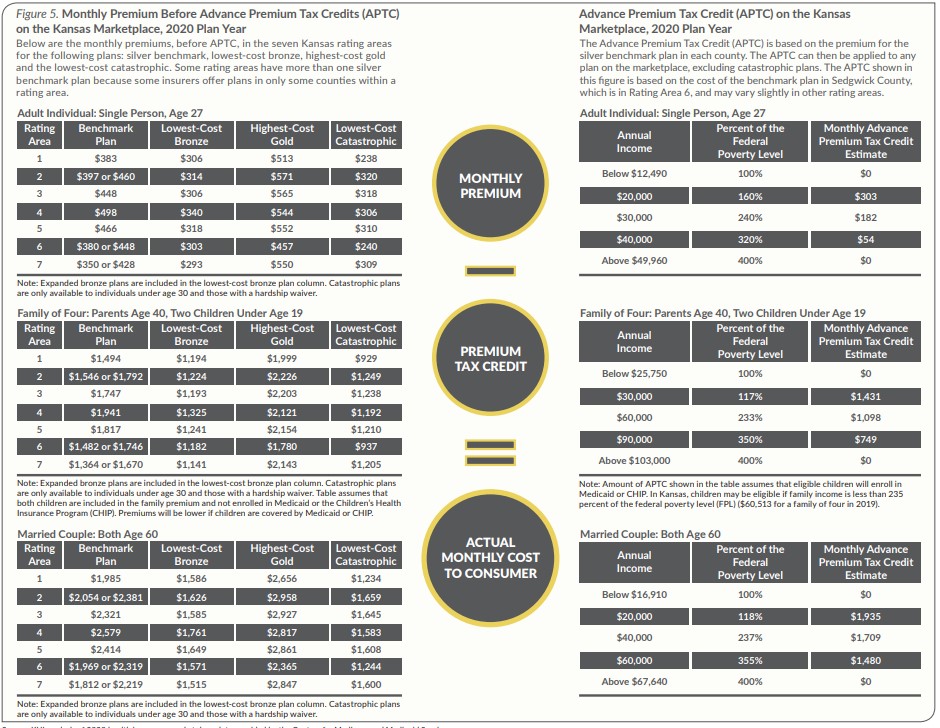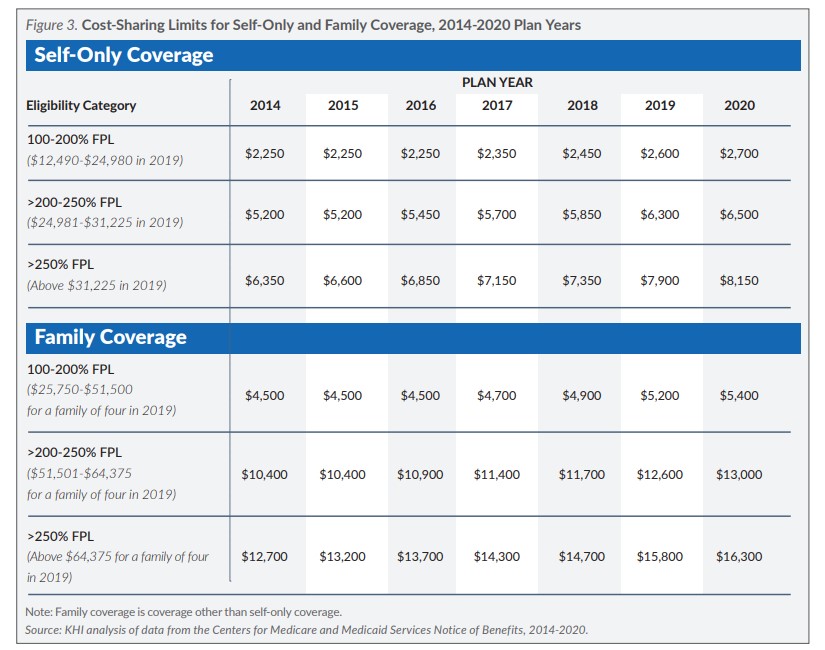Reduced Navigator Funding
Under the ACA, the health insurance marketplace is required to establish navigator programs for outreach and education for consumers who are interested in purchasing marketplace health insurance coverage. Navigators are typically organizations, such as health systems, patient advocacy organizations, universities and other trusted local organizations that have existing relationships with uninsured or underinsured consumers who are likely eligible to enroll in the marketplace.
Since passage of the ACA, the federal government has provided funding to states using Healthcare.gov for navigator programs through grants to organizations in each state. For plan year 2020, a total of $10 million to 34 organizations was awarded nationally, down from $67 million for 105 organizations in 2014. Kansas received $213,317 for two organizations in 2020, down from $886,085 for three organizations in 2014. The two Kansas organizations will be serving primarily 17 counties throughout northeast, central and western Kansas.
Looking Ahead
Enrollment in the Kansas marketplace has decreased slightly over the last few years. Uncertainty about the future of the ACA overall, ongoing legal battles about specific parts of the law and increased attention to immigration enforcement are among the likely reasons. Enrollment in the Kansas marketplace peaked at 89,566 in 2016 and was 84,304 in 2019. The addition of more plans and insurers to choose from and the moderation of premium price increases could be expected to increase enrollment in 2020. A continued strong economy and the availability of lower-cost options outside the marketplace could be expected to decrease enrollment. Watching the trends in insurance coverage and carefully assessing the cost and adequacy of the coverage available are important responsibilities of states in this rapidly changing health care environment.
